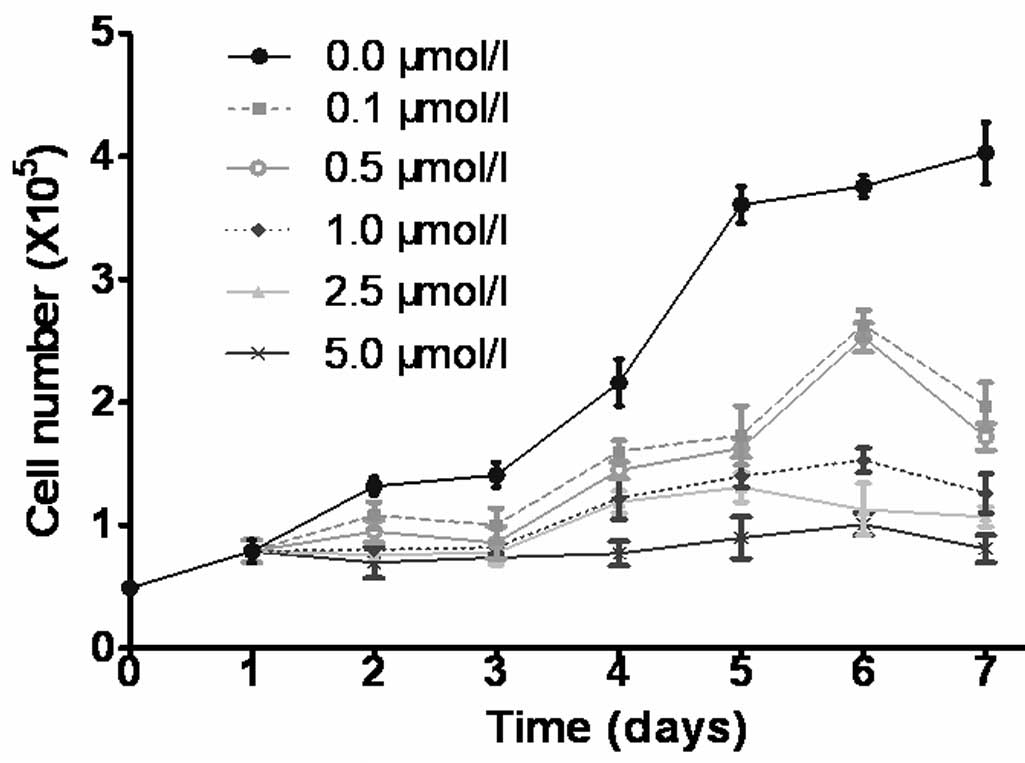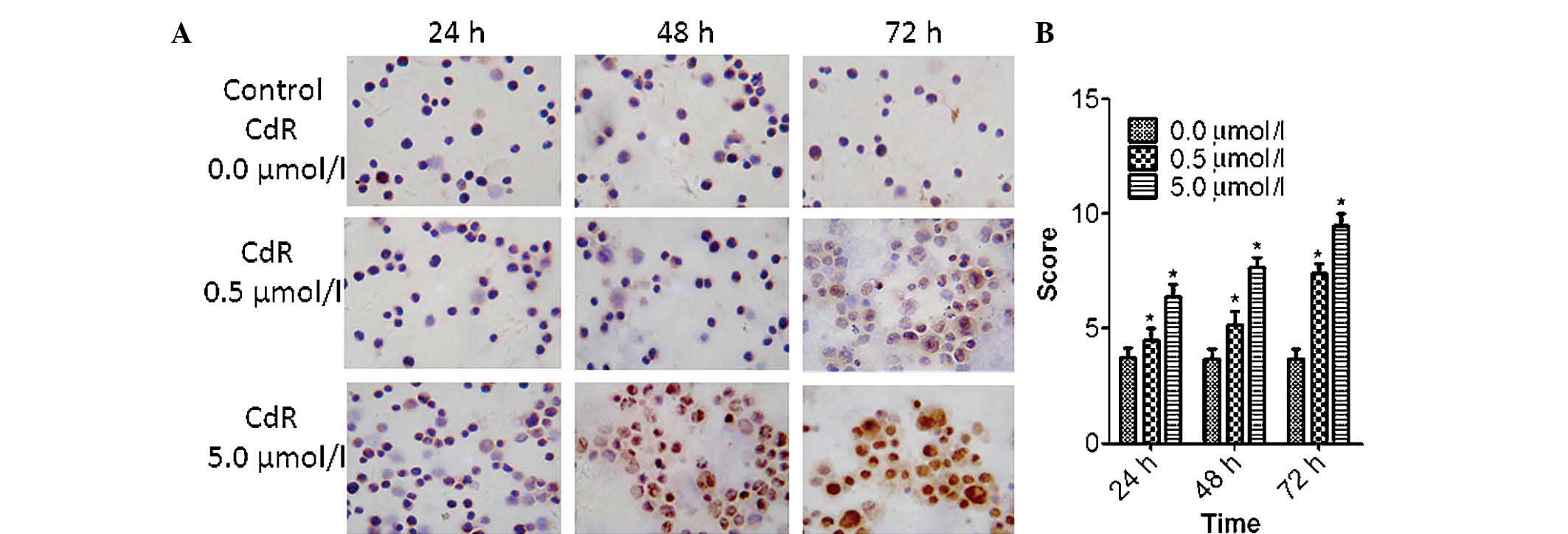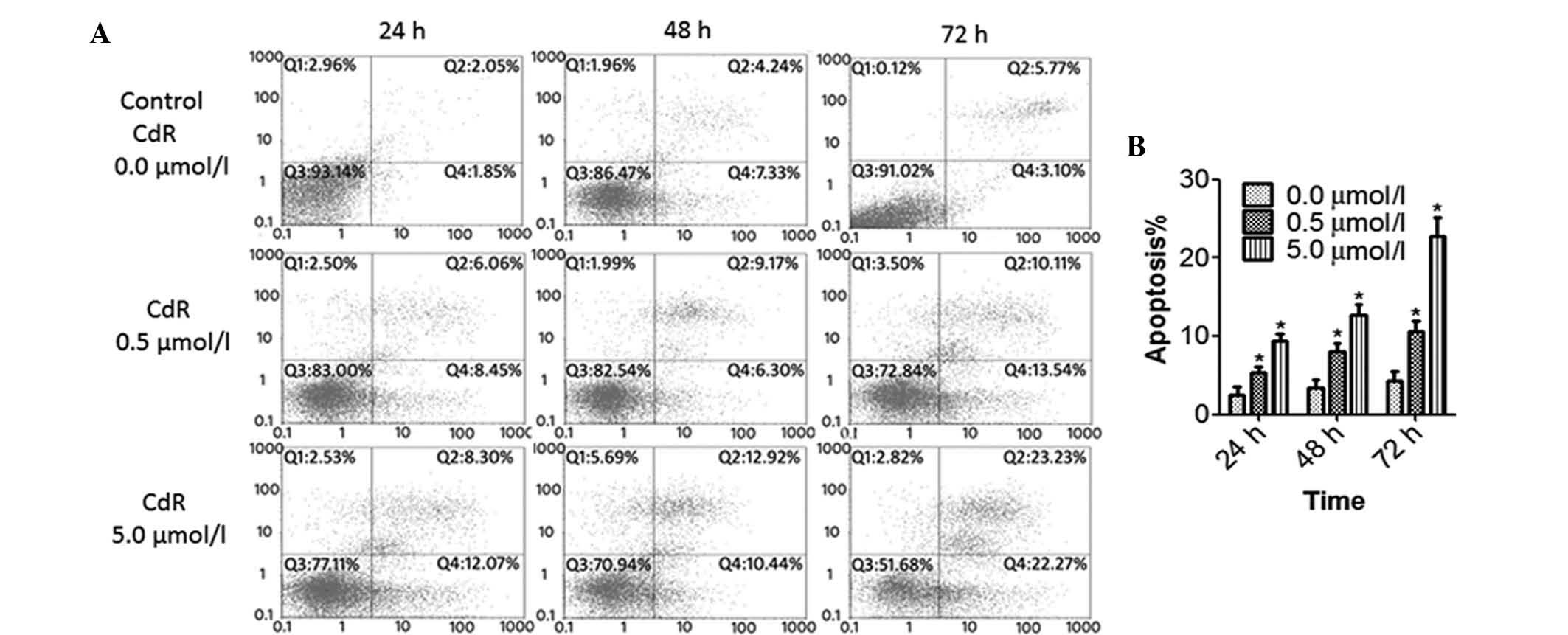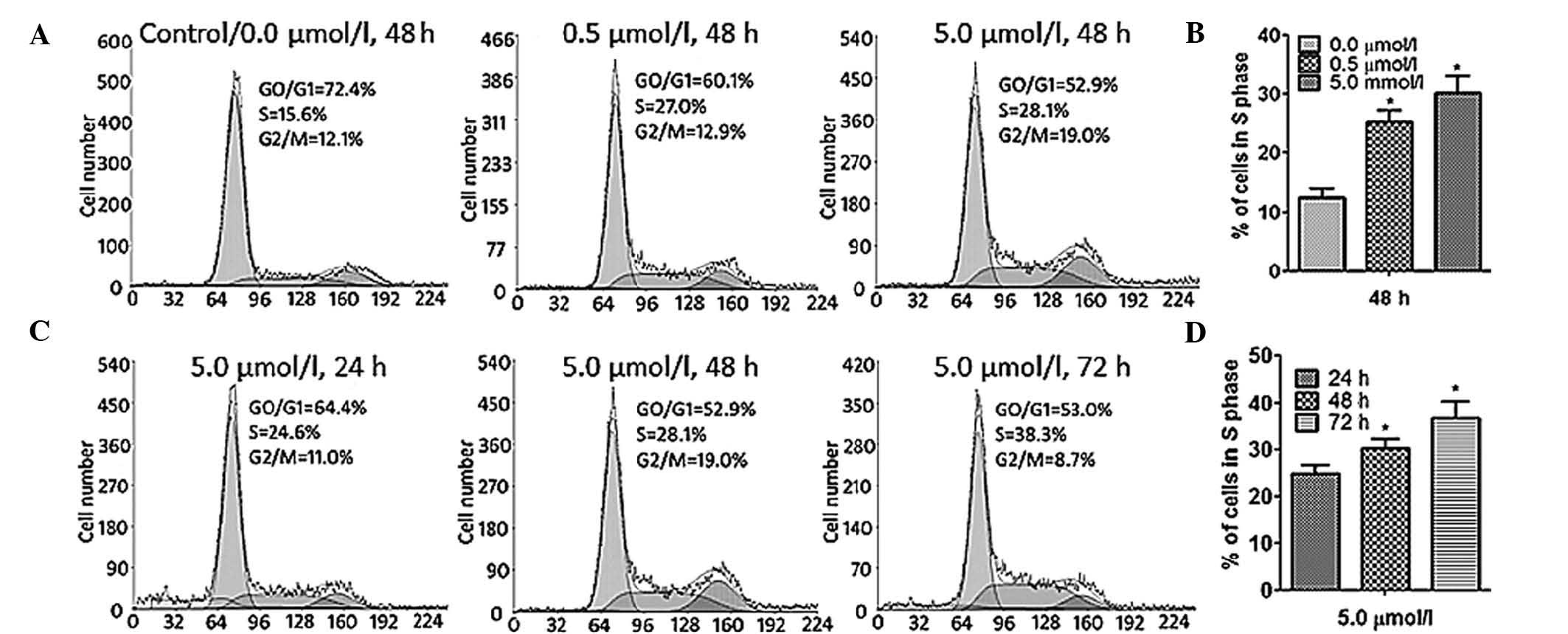|
1
|
Sandoval J, Mendez-Gonzalez J, Nadal E,
Chen G, Carmona FJ, Sayols S, Moran S, Heyn H, Vizoso M, Gomez A,
et al: A prognostic DNA methylation signature for stage I
non-small-cell lung cancer. J Clin Oncol. 31:4140–4147. 2013.
View Article : Google Scholar : PubMed/NCBI
|
|
2
|
Esteller M: Dormant hypermethylated tumour
suppressor genes: Questions and answers. J Pathol. 205:172–180.
2005. View Article : Google Scholar : PubMed/NCBI
|
|
3
|
Sato T, Arai E, Kohno T, Tsuta K, Watanabe
S, Soejima K, Betsuyaku T and Kanai Y: DNA methylation profiles at
precancerous stages associated with recurrence of lung
adenocarcinoma. PLoS One. 8:594442013. View Article : Google Scholar
|
|
4
|
Guillaumet-Adkins A, Richter J, Odero MD,
Sandoval J, Agirre X, Catala A, Esteller M, Prósper F, Calasanz MJ,
Buño I, et al: Hypermethylation of the alternative AWT1 promoter in
hematological malignancies is a highly specific marker for acute
myeloid leukemias despite high expression levels. J Hematol Oncol.
7:42014. View Article : Google Scholar : PubMed/NCBI
|
|
5
|
Zebedee Z and Hara E: Id proteins in cell
cycle control and cellular senescence. Oncogene. 20:8317–8325.
2001. View Article : Google Scholar
|
|
6
|
Rivera R and Murre C: The regulation and
function of the Id proteins in lymphocyte development. Oncogene.
20:8308–8316. 2001. View Article : Google Scholar
|
|
7
|
Yu L, Liu C, Vandeusen J, Becknell B, Dai
Z, Wu YZ, Raval A, Liu TH, Ding W, Mao C, et al: Global assessment
of promoter methylation in a mouse model of cancer identifies Id4
as a putative tumor-suppressor gene in human leukemia. Nat Genet.
37:265–274. 2005. View
Article : Google Scholar : PubMed/NCBI
|
|
8
|
Wilson JW, Deed RW, Inoue T, Balzi M,
Becciolini A, Faraoni P, Potten CS and Norton JD: Expression of Id
helix-loop-helix proteins in colorectal adenocarcinoma correlates
with p53 expression and mitotic index. Cancer Res. 61:8803–8810.
2001.PubMed/NCBI
|
|
9
|
Kuzontkoski PM, Mulligan-Kehoe MJ, Harris
BT and Israel MA: Inhibitor of DNA binding-4 promotes angiogenesis
and growth of glioblastoma multiforme by elevating matrix GLA
levels. Oncogene. 29:3793–3802. 2010. View Article : Google Scholar : PubMed/NCBI
|
|
10
|
Zeng W, Rushing EJ, Hartmann DP and Azumi
N: Increased inhibitor of differentiation 4 (id4) expression in
glioblastoma: A tissue microarray study. J Cancer. 1:1–5. 2010.
View Article : Google Scholar : PubMed/NCBI
|
|
11
|
Arnold JM, Mok SC, Purdie D and
Chenevix-Trench G: Decreased expression of the Id3 gene at 1p36.1
in ovarian adenocarcinomas. Br J Cancer. 84:352–359. 2001.
View Article : Google Scholar : PubMed/NCBI
|
|
12
|
Deleu S, Savonet V, Behrends J, Dumont JE
and Maenhaut C: Study of gene expression in thyrotropin-stimulated
thyroid cells by cDNA expression array: ID3 transcription
modulating factor as an early response protein and tumor marker in
thyroid carcinomas. Exp Cell Res. 279:62–70. 2002. View Article : Google Scholar : PubMed/NCBI
|
|
13
|
Lasorella A, Uo T and Iavarone A: Id
proteins at the cross-road of development and cancer. Oncogene.
20:8326–8333. 2001. View Article : Google Scholar
|
|
14
|
Hagiwara K, Nagai H, Li Y, Ohashi H, Hotta
T and Saito H: Frequent DNA methylation but not mutation of the ID4
gene in malignant lymphoma. J Clin Exp Hematop. 47:15–18. 2007.
View Article : Google Scholar : PubMed/NCBI
|
|
15
|
Umetani N, Mori T, Koyanagi K, Shinozaki
M, Kim J, Giuliano AE and Hoon DS: Aberrant hypermethylation of ID4
gene promoter region increases risk of lymph node metastasis in T1
breast cancer. Oncogene. 24:4721–4727. 2005. View Article : Google Scholar : PubMed/NCBI
|
|
16
|
Cen J, Shen J, Wang X, Kang H, Wang L, Sun
L, Li Y and Yu L: Association between lymphoma prognosis and
aberrant methylation of ID4 and ZO-1 in bone marrow and
paraffin-embedded lymphoma tissues of treatment-naive patients.
Oncol Rep. 30:455–461. 2013.PubMed/NCBI
|
|
17
|
Smith E, De Young NJ, Pavey SJ, Hayward
NK, Nancarrow DJ, Whiteman DC, Smithers BM, Ruszkiewicz AR,
Clouston AD, Gotley DC, et al: Similarity of aberrant DNA
methylation in Barrett's esophagus and esophageal adenocarcinoma.
Mol Cancer. 7:752008. View Article : Google Scholar : PubMed/NCBI
|
|
18
|
Noetzel E, Veeck J, Horn F, Hartmann A,
Knüchel R and Dahl E: Promoter methylation of ID4. A marker for
recurrence-free survival in human breast cancer. Pathologe.
29(Suppl 2): S319–S327. 2008.In German. View Article : Google Scholar
|
|
19
|
Yang Q, Shan L, Yoshimura G, Nakamura M,
Nakamura Y, Suzuma T, Umemura T, Mori I, Sakurai T and Kakudo K:
5-aza-2′-deoxycytidine induces retinoic acid receptor beta 2
demethylation, cell cycle arrest and growth inhibition in breast
carcinoma cells. Anticancer Res. 22:2753–2756. 2002.
|
|
20
|
Wang H, Wang XQ, Xu XP and Lin GW: ID4
methylation predicts high risk of leukemic transformation in
patients with myelodysplastic syndrome. Leuk Res. 34:598–604. 2010.
View Article : Google Scholar
|
|
21
|
Rüter B, Wijermans PW and Lübbert M: DNA
methylation as a therapeutic target in hematologic disorders:
Recent results in older patients with myelodysplasia and acute
myeloid leukemia. Int J Hematol. 80:128–135. 2004. View Article : Google Scholar : PubMed/NCBI
|
|
22
|
Umetani N, Takeuchi H, Fujimoto A,
Shinozaki M, Bilchik AJ and Hoon DS: Epigenetic inactivation of Id4
in colorectal carcinomas correlates with poor differentiation and
unfavorable prognosis. Clin Cancer Res. 10:7475–7483. 2004.
View Article : Google Scholar : PubMed/NCBI
|
|
23
|
Vinarskaja A, Goering W, Ingenwerth M and
Schulz WA: ID4 is frequently downregulated and partially
hypermethylated in prostate cancer. World J Urol. 30:319–325. 2012.
View Article : Google Scholar
|
|
24
|
Xu RR, Liu F, Cui X, Zhang XW and Wang Y:
ID4 promoter methylation in acute myeloid leukemia. J Exp Hematol.
19:582–584. 2011.In Chinese.
|
|
25
|
Dell'Orso S, Ganci F, Strano S, Blandino G
and Fontemaggi G: ID4: A new player in the cancer arena.
Oncotarget. 1:48–58. 2010. View Article : Google Scholar
|
|
26
|
Chan AS, Tsui WY, Chen X, Chu KM, Chan TL,
Chan AS, Li R, So S, Yuen ST and Leung SY: Downregulation of ID4 by
promoter hypermethylation in gastric adenocarcinoma. Oncogene.
22:6946–6953. 2003. View Article : Google Scholar : PubMed/NCBI
|
|
27
|
Qu F, Zhao CH, Diao YQ, Zhu XL, Chen J, Li
M, Liu CP, Jiang L and Jin J: Methylation of Id4 gene and
inhibitive effect of arsenic trioxide on it in Raji cells. Clin J
Hematol. 31:821–825. 2010.In Chinese.
|
|
28
|
Vandeputte DA, Troost D, Leenstra S,
Ijlst-Keizers H, Ramkema M, Bosch DA, Baas F, Das NK and Aronica E:
Expression and distribution of id helix-loop-helix proteins in
human astrocytic tumors. Glia. 38:329–338. 2002. View Article : Google Scholar : PubMed/NCBI
|














